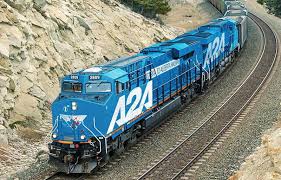US president Donald Trump has issued a Presidential Border Crossing Permit for the US $17bn Alaska-Alberta Railway project. A2A Rail is now free to lay track across the border between Alaska and Canada.
The Alaska-Alberta Railway will be a modern, safe, and efficient way to transport a wide range of bulk commodities including grain, ore, and other resources, in addition to containerized goods and passengers. The proposed route connects Alaska’s deep-water ports and the existing Alaska Railroad network to Canadian railroads through northern Alberta. Construction is anticipated to be complete by 2025, with the railway being fully operational in 2026. Soft construction is ready to commence this year.
Also Read: Construction of Phase I of North Metro Rail Line in Denver, US compete
“Missing link” between Alaska and the North American railway system
The A2A border crossing, which will be located between Alaska and Yukon, provides a longsought “missing link” between Alaska and the North American railway system, ensuring free flow of freight from the Gulf of Mexico to the Gulf of Alaska. This rail link will be the anchor tenant of a major northern development corridor; the purpose of which is to facilitate economic development, rural household service provision, and other opportunities to the communities in this isolated region. The presidential permit was signed following advice from the US Department of State that the A2A railway was in the best foreign policy interest of the United States.
According to A2A Founder and Chairman Sean McCoshen, the issuance of a presidential permit is a significant milestone that will greatly assist with the continued efforts to build the A2A railway. “This is a world-class infrastructure project that will generate thousands of jobs for American and Canadian workers, provide a new, more efficient route for trans-Pacific shipping and link Alaska to North American transportation networks. The new rail line will provide for greater national, international, and globaltrade and create new and exciting economic development opportunities for a wide range of businesses, communities, and Indigenous Peoples in Canada and Alaska,” he said.
McCoshen further added that they estimate the rail line could unlock US $60bn in additional
cumulative GDP through 2040 and create more than 28,000 jobs. “In addition, A2A will lift
household incomes by an average of 40% in the communities it passes through in Northwestern Canada and Alaska,” he affirmed.

